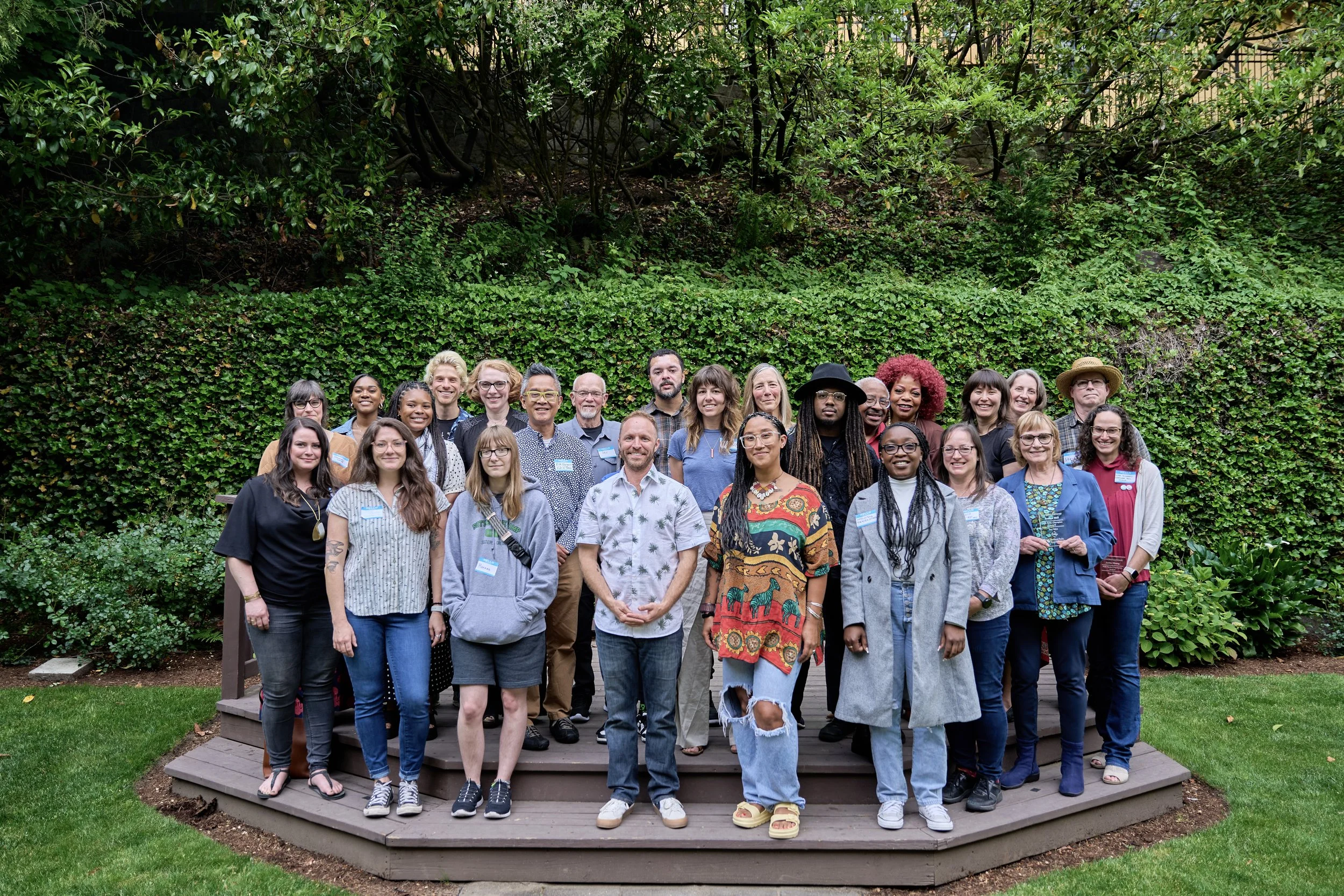Photos courtesy OSU Master Naturalist Program
Portland is home to thousands of acres of natural areas with interesting flora, fauna and geology to discover around every corner. In an effort to get Portlanders out to enjoy their natural areas, we teamed up with an OSU Master Naturalist Program student, Kenneth Cobleigh, to write a series of seasonal blogs about parks through a naturalist's eyes. See the steps below for your 15-minute nature break today!
Ken Cobleigh is a systems engineer and author with a strong passion for the natural world and how humans fit into it. His favorite park to spend time is Hoyt Arboretum and he is currently enrolled in the OSU Master Naturalist Program to expand the breadth and width of his nature knowledge.
Have you ever been 'lost' in the woods? I have, and it wasn’t because I didn’t know where I was on a map; rather I was lost in the wonderful world of nature that surrounded me. As I have gotten older, I have had to moderate my pace due to painful arthritis that restricts my movement. But in addition to the changes in my physical body I have come to realize that I have been missing out on the real beauty and the subtlety of the natural world by rushing through it to reach a destination. Now I walk slowly and deliberately and with a passion to discover new things.
I am studying to become an Oregon Master Naturalist, a program offered through OSU extension service, and in doing so have been instructed to increase my observational skills. This includes using more than my eyes to see, and this process is very enlightening to me.
To contemplate even a small part of the extreme complexity of the natural world is a daunting task. For example, I am in awe of the numerous interrelationships between species in a given ecosystem that may take decades or even centuries to fully comprehend. And what drives this life-long adventure? Primarily careful, recorded observations! A journal for notes, sketches, ideas, questions, etc. is a great tool and is indispensable for the naturalist.
Here is a simple exercise that anyone can do in a short time – say 15-20 minutes. First, pick a place, maybe one of your favorite parks or natural areas or even your own backyard. Then find a peaceful spot to settle into. Your chosen spot should be off the beaten track a little so you are not interrupted. Sit on the ground or on a log. Relax and close your eyes. What immediately happens? You feel deprived of a very primary sense – your sight! But don’t fret; in a few minutes you will acclimatize.
As you do this exercise, do more than just sit and enjoy the peace. Ask yourself questions such as:
What is the current microclimate like? Is it cold, warm, moist, dry? Am I in a field, the woods, on a mountainside? Am I near water? How does the local geography shape this microclimate?
How does the ground feel – rocky, soft, sandy? How does the local geology impact what I feel?
What sounds am I hearing? Which are natural and which are man-made? If in the woods, listen for branches rubbing or the wind whispering through the needles and leaves. Pay attention to the birdsongs and what direction are they coming from.
What direction is the wind coming from; how strong is it; how does it fluctuate?
What am I smelling? Is it floral, pungent, or foul smelling?
What can I feel? How does the bark of the log I am sitting on feel? Is it deeply furrowed, slightly furrowed, or smooth?
Upon opening your eyes, see how many of your observations make sense from a visual perspective. Begin your walk again. Move slowly and quietly. Use your eyes to scan the ground for animal tracks. Pay attention to the texture and the color of the foliage and the diversity and activity of the fauna of your chosen spot. Now integrate all of your senses together. What is the story this place is trying to tell you? You are on your way to a much deeper understanding and appreciation for the nature that surrounds you.
I encourage you to do this numerous times until all of your senses are working together in harmony to perceive the natural world around you in detail. I guarantee this to be a very satisfying journey!








